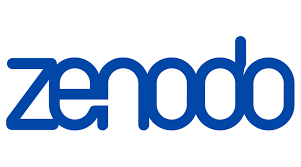Measuring the Technical Efficiency of Libyan Banks using Data Envelopment Analysis
Keywords:
Banking Efficiency, Libyan Banks, Data Envelopment AnalysiAbstract
The main objective of this study is to measure banking efficiency of Libyan banks during 2010-2019. The study employs Data Envelopment Analysis (DEA) input-orientated model. Constat Return to Scale (CRS) and Variable Return to Scale (VRS) were used to measure the relative efficiency. The study follows intermediation approach to select two inputs and two outputs. The study includes three sections plus introduction and conclusion, section one: previews studies, section two: literature review, and section three: practical study. The result shows that the Libyan banks do not manage their sources and inputs efficiently, the average of overall technical efficiency of Libyan banks is 84.1%, which means there was waste of 15.9% of input, in addition, average of PTE and SE 93%, 90.6% respectively. the findings indicate that private banks more efficient than state banks, also large banks more efficient than small bank.

Downloads
Published
How to Cite
Issue
Section
License
Copyright (c) 2025 Journal of Economics and Political Sciences

This work is licensed under a Creative Commons Attribution 4.0 International License.
- The researcher must submit a commitment (according to the provided form) confirming that the scientific work submitted for publication in the journal has not been previously published in any form, is not under consideration for publication by any other entity, and is not a summary of any previously published work.
- All scientific work submitted for publication in the journal will be subjected to an approved software program to detect any violations of intellectual property laws (plagiarism) to ensure its academic integrity.
- In case of any violations of intellectual property laws, the scientific work will be permanently rejected for publication in the journal.
- The scientific work must be submitted in three printed copies (A4 size), along with one copy on a CD in Word format under the Windows operating system.
- The editorial board has the right to perform an initial review of the submitted scientific work to assess its suitability for peer review or to reject it.
- The editorial board has the right to request any documents deemed necessary to complete the initial review or peer review process, such as but not limited to: (statistical data analysis forms, questionnaires filled by respondents, reports, etc.).
- The researcher must complete the journal’s submission form, which includes necessary contact information.
- The period for submitting scientific work by researchers is as stated in the announcement for accepting submissions for publication in the journal.
- Submissions for publication can be delivered in person or via the journal's email.
- Priority will be given to applied scientific work (practical research), especially work that addresses current issues relevant to Libya.
- The arrangement of scientific works for publication in the journal will depend on technical considerations determined by the editorial board.
- The views expressed in the scientific work are those of the authors only and do not necessarily represent the views of the journal.
Accepted 2025-02-16
Published 2025-05-27











